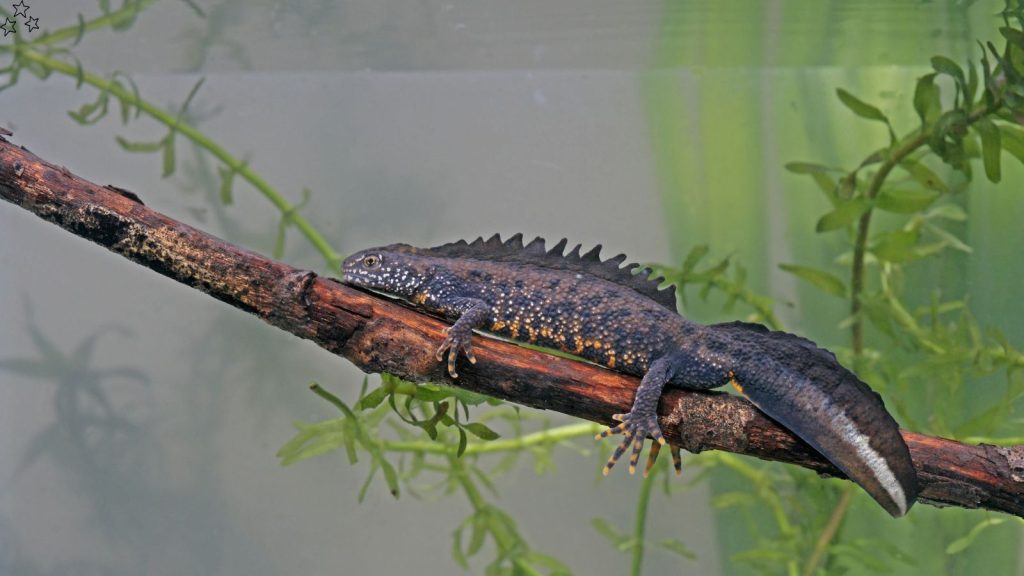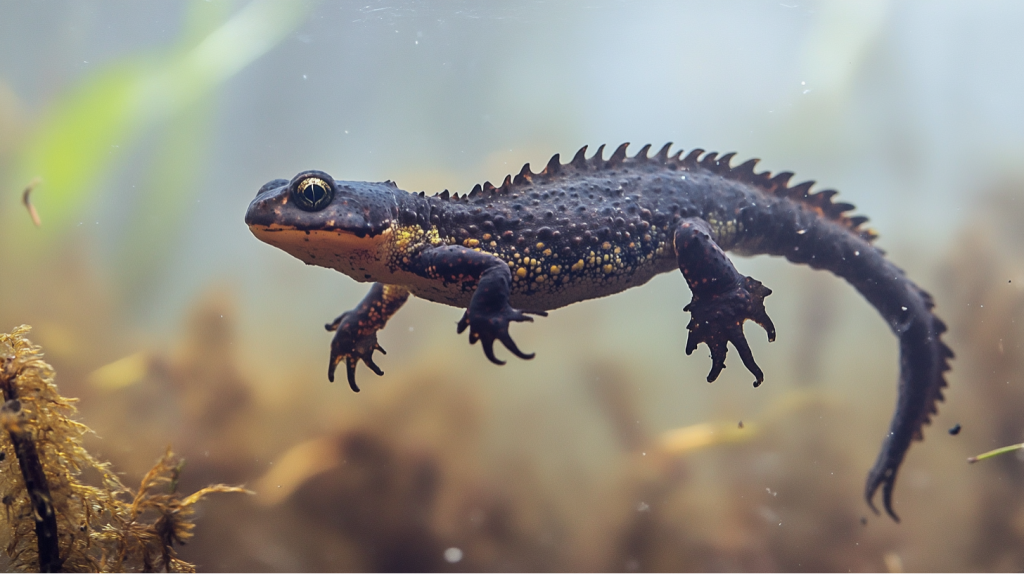The great crested newt, a fascinating amphibian native to the UK and parts of Europe, is more than just a small, lizard-like creature. These remarkable little salamanders are pretty amazing. I uncovered an old, neglected pond when we moved to our property and, Im thrilled to say that it was home to some of these fabulous little critters. So, we left it well alone and fenced the area off from the dogs so the newts and other wildlife remained undisturbed. Despite their protected status, many people know little about these elusive creatures. From their dragon-like appearance to their complex courtship rituals, great crested newts are full of surprises.
Dragon-Like Appearance

Male great crested newts develop a jagged crest along their back during breeding season, giving them a miniature dragon-like appearance. This crest runs from the head to the tail and is used to attract females. The males also develop a silvery-blue stripe along their tail, adding to their striking breeding-season look.
Toxic Skin Secretions

Great crested newts secrete a toxic substance from their skin as a defense mechanism. This toxin can cause irritation to predators if ingested or if it comes into contact with their eyes or mouth. While not dangerous to humans, it’s best to wash your hands after handling these newts to avoid any potential skin irritation.
And know that you’re not supposed to handle them at all without the appropriate authority.
Nocturnal Hunters

These newts are primarily nocturnal, coming out at night to hunt for food. They have excellent night vision and can detect the slightest movements of their prey. Great crested newts feed on a variety of small invertebrates, including worms, insects, and even small crustaceans in the water.
Unique Courtship Dance

Male great crested newts perform an elaborate courtship dance to attract females. This dance involves the male positioning himself in front of the female and waving his tail, creating currents that waft his pheromones towards her. If the female is impressed, she may choose to mate with him.
Long Lifespan

In the wild, great crested newts can live up to 15 years. However, in captivity, they have been known to live even longer, with some individuals reaching 20 years or more. This long lifespan is unusual for such a small amphibian and contributes to their ecological importance.
Habitat Loss Threats

One of the biggest threats to great crested newts is habitat loss. They require both aquatic and terrestrial habitats to complete their life cycle. The destruction of ponds and fragmentation of their land habitats due to development and intensive agriculture have led to significant population declines in many areas.
Legal Protection

Great crested newts are protected by law in the UK and many other European countries. It’s illegal to kill, capture, disturb, or sell these newts without a special license. This protection extends to their habitats as well, making them an important consideration in land development projects.
Metamorphosis Marvel

Like many amphibians, great crested newts undergo a fascinating metamorphosis. They start life as aquatic larvae with external gills, gradually developing lungs and losing their gills as they mature. This transformation allows them to live both in water and on land as adults.
Winter Hibernation

During the cold winter months, great crested newts hibernate on land. They find shelter in places like log piles, stone walls, or underground burrows. Their metabolism slows down dramatically during this time, allowing them to survive for months without food.
UV Vision

Recent research suggests that great crested newts may be able to see ultraviolet (UV) light. This ability could help them navigate during twilight hours and might play a role in their courtship behaviors. It’s another example of how these small creatures are more complex than they might appear at first glance.
Regenerative Abilities

Like many other salamanders, great crested newts have impressive regenerative abilities. They can regrow lost limbs and even parts of their organs if damaged. This remarkable ability is a subject of scientific interest and could potentially have applications in human medicine.
Unique Breathing Technique

Adult great crested newts have an interesting breathing technique when in water. They can absorb oxygen through their skin, allowing them to stay submerged for long periods. However, they also occasionally come to the surface to gulp air, which they store in their lungs as a backup oxygen supply.
Underwater Scent Detection

Great crested newts have a unique ability to detect scents underwater. They possess a specialized organ called the Jacobson’s organ, located in the roof of their mouth. This organ allows them to pick up chemical signals in the water, which helps them locate prey and potential mates. To use this organ, newts perform a behavior called “sniffing,” where they open and close their mouths rapidly to circulate water over the sensory cells.
Cannibalistic Tendencies

Adult great crested newts have been observed engaging in cannibalistic behavior, particularly towards their own young. In ponds with high newt populations and limited food resources, adults may prey on larvae and juveniles. This behavior helps regulate population sizes and ensures the survival of the fittest individuals. It’s a stark reminder of the harsh realities of nature, even among members of the same species.
Paedomorphosis in Some Populations

In certain populations of great crested newts, a phenomenon called paedomorphosis has been observed. This is where some individuals retain juvenile characteristics into adulthood, most notably their gills. These paedomorphic adults remain fully aquatic throughout their lives, never developing lungs or leaving the water. This adaptation allows them to thrive in permanent water bodies where terrestrial habitats might be limited or unsuitable.



